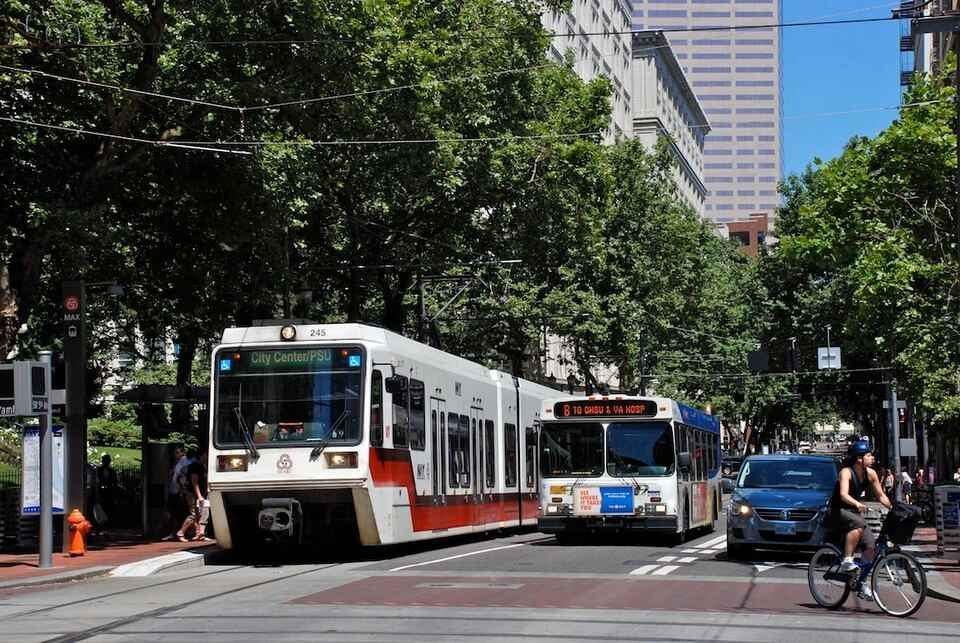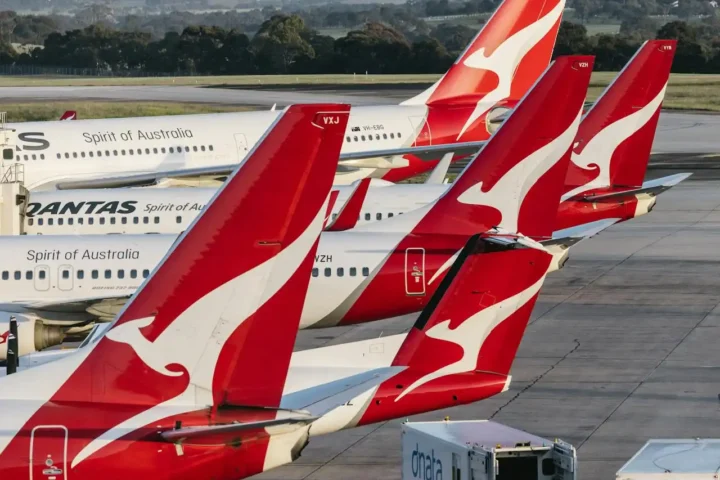Oregon’s public transit systems stand at a crossroads as state lawmakers debate whether to increase the Statewide Transportation Improvement Fund (STIF) payroll tax or eliminate transit funding altogether. The current 0.1 percent payroll tax, unchanged since 2017, generates approximately $141 million annually for transit services across Oregon.
Two competing proposals have emerged from the Legislature. Democratic lawmakers, led by Sen. Khanh Pham of Portland, propose phasing the STIF payroll tax from 0.1 percent to 0.5 percent over eight years. Their plan would generate an estimated $268.6 million per biennium and cost Oregon workers making the median salary roughly $16.75 per month by 2032.
House Republicans, however, want to eliminate the $306 million per biennium STIF program entirely and redirect those funds to roads and bridges. Rep. Shelly Boshart Davis of Albany said, “We want ODOT to get back to repairing and maintaining safe and reliable roads and bridges, and stop using Oregonians as a bank when they run out of money.”
Transit agencies warn of severe cuts without additional funding. TriMet, which serves Portland’s metro area, faces a $74.4 million deficit and warns it will need to cut 34 of its 78 bus lines by July 2027 without increased STIF funding. By July 2031, up to 51 bus lines could be eliminated without a funding increase.
The Oregon Transit Association reports that 63 percent of transit agencies across the state face operating deficits. Without the proposed 0.4 percent phased increase, agencies will face cuts ranging from 15 to 30 percent over the next several years.
In rural Oregon, the stakes are equally high. Kane Lester with Community Connection of Northeast Oregon said STIF funding has been essential for dialysis, grocery, and medical trips across Baker, Wallowa, and Union counties. “When STIF came into the picture, it was a huge game-changer,” Lester said. “The one dialysis clinic we have is in La Grande, and we have people from Enterprise and Baker who need to be able to access the facility.”
Oregon transit agencies face a double challenge as federal pandemic relief funds expire. The Coronavirus Aid, Relief, and Economic Security (CARES) Act, Coronavirus Response and Relief Supplemental Appropriations (CRRSA) Act, and American Rescue Plan (ARP) provided over $150 million to Oregon transit agencies between 2020 and 2024. These funds expire by mid-2026, creating what experts call a “fiscal cliff.”
The Federal Transit Administration reports that transit ridership nationwide remains at 74 percent of pre-pandemic levels while operating costs have increased 12 percent. Oregon’s transit systems operated on similar patterns, making the loss of federal relief funds particularly challenging.
Transit advocates emphasize equity issues in the funding debate. According to Oregon Department of Transportation data, 31 percent of Oregonians are not licensed drivers, and one-quarter of residents don’t drive regularly. Public transit serves as a lifeline for low-income families, seniors, and people with disabilities.
Sen. Khanh Pham noted, “Public transit is a lifeline for communities. It offers access to opportunity that Oregonians really appreciate and depend on, adding that one-quarter of Oregonians don’t drive.”
Environmental benefits also factor into the debate. The clean transport revolution emphasizes how public transportation reduces carbon emissions. According to the American Public Transportation Association, transit reduces per-capita carbon emissions by 33 percent compared to solo driving. Public transit displaces an estimated 200,000 metric tons of CO₂ annually in Oregon.
Lawmakers have discussed alternative revenue sources beyond the payroll tax. Rep. Mark Gamba of Milwaukie mentioned exploring a one-time road use fee on new vehicle purchases. Oregon has also piloted a Vehicle Miles Traveled (VMT) fee program that could provide sustainable revenue aligned with actual road usage.
Washington State’s “Move Ahead WA” program demonstrates one model, using an 11.9-cent gas tax increase indexed to inflation that commits $3 billion to public transportation over 16 years. California’s Measure M, a half-cent sales tax, has generated $120 billion over 40 years for Los Angeles County’s transit expansions.
The transportation package remains under negotiation, with lawmakers expected to unveil a final framework by May 15, 2025. Public hearings in Salem are scheduled for late May, giving legislators time to consider public input before making final decisions.
Similar Posts
Ten Democratic lawmakers sent a letter to legislative leadership in March urging a phased increase to reach 0.5 percent by 2033 to ensure no cuts to local transit service. The letter noted that 64 percent of public comments during the Joint Committee on Transportation’s 2024 community roadshow identified transit investments as a top priority.
The STIF program, established under House Bill 2017, collects revenue from multiple sources beyond the payroll tax. Non-highway gas taxes, cigarette taxes, and ID card fees contribute additional funding. The current 0.1 percent payroll tax is collected from Oregon residents regardless of where they work and non-residents who work in Oregon.
Transit agencies can use STIF funds for operations, planning, administration, capital vehicles, equipment, and technology. The program allocates 90 percent through a formula program, 5 percent for discretionary grants, 4 percent for inter-community grants, and 1 percent for ODOT’s Technical Resource Center.
Both urban and rural systems face significant challenges. TriMet reports that 67 percent of its riders are transit-dependent, meaning they rely on public transportation for essential trips. Rural providers like the Rogue Valley Transportation District and Cascades East Transit serve smaller populations but provide equally critical connections to employment, healthcare, and services.
Tillamook County Transportation District uses dial-a-ride services prioritized for dialysis patients, demonstrating how rural systems tailor services to specific community needs. Air pollution from increased car dependence would worsen without these services. Driver shortages compound reliability issues across rural systems.
The debate occurs against Oregon’s unique revenue structure. Oregon lacks a general sales tax and has limited property tax authority due to Measures 5 and 50. The gas tax primarily funds highway projects, leaving few options for transit funding.
As Rep. Gamba noted, “In our infinite wisdom, we chose not to have a sales tax. Then we capped property taxes with Measures 5 and 50. And then we added the kicker to make everything even worse.”
House Republicans maintain that local governments should fund transit services themselves, arguing that ODOT should focus on roads and bridges. Democrats counter that transit provides essential mobility for vulnerable populations and supports economic development across the state.
Transit advocacy groups have mobilized around the funding debate. Move Oregon Forward and The Street Trust emphasize safety and equity benefits of robust transit funding. The Oregon Transit Association conducted surveys showing widespread deficits among member agencies.
Joel Iboa, Executive Director of Oregon Just Transition Alliance, criticized the Republican proposal, saying it would “make it harder for low-income Oregonians to get to work, school, or the doctor” in a time when inflation already challenges working families.
Transit operators and urban planners note that service cuts create a downward spiral—reduced service leads to lost ridership, which reduces fare revenue and creates pressure for further cuts. This pattern became evident in many systems during the pandemic and remains a concern as federal relief funds expire.
The legislative debate continues as agencies plan for potential service reductions. Transit officials emphasize that cuts would affect not just riders but broader communities through increased traffic congestion, reduced access to employment and services, and higher transportation costs for vulnerable populations.

Oregon’s transportation funding package will determine whether the state maintains its transit services or faces widespread cuts across urban and rural systems. The decision affects 31 percent of Oregonians who don’t drive and communities that depend on public transportation for economic vitality.
The debate centers on fundamental questions about transportation priorities, revenue mechanisms, and the role of transit in Oregon’s future. As lawmakers prepare for final decisions, transit agencies continue planning for scenarios ranging from modest increases to complete elimination of dedicated transit funding.


















